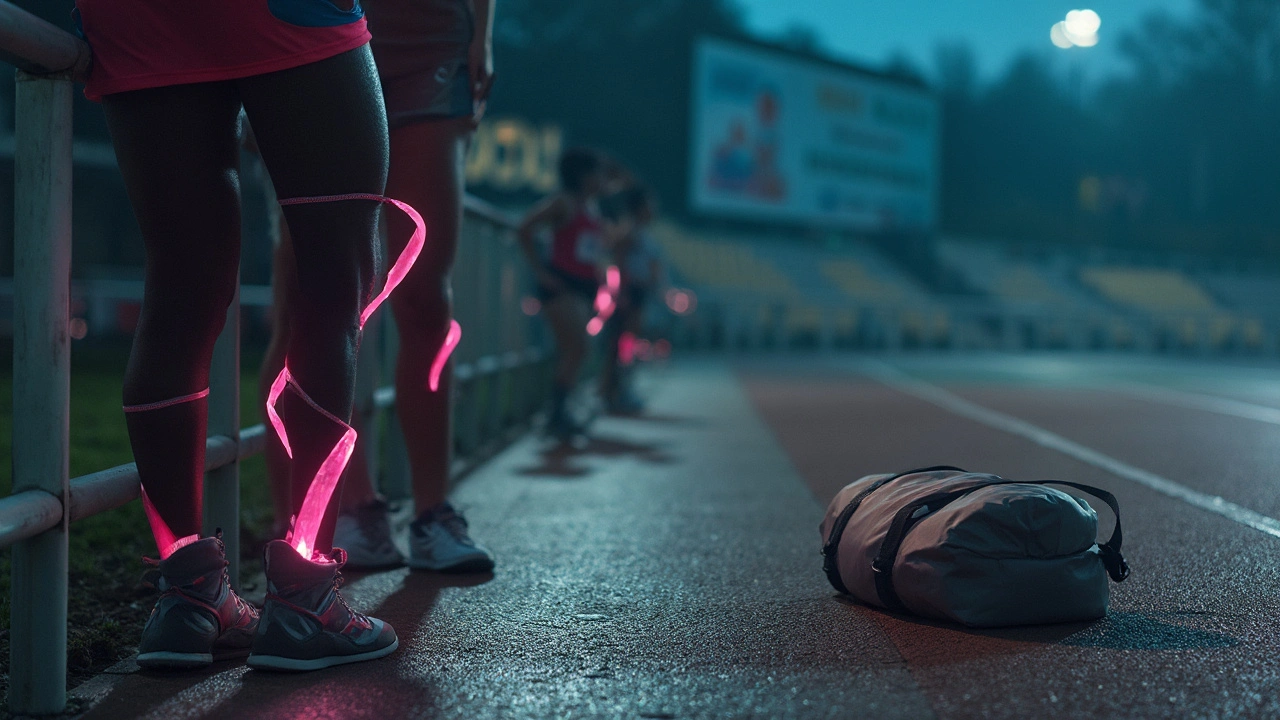DOMS Relief: Simple Tricks to Ease Post‑Workout Soreness
If you’ve ever felt that achy, stiff feeling a day or two after a hard gym session, you’ve met DOMS – delayed onset muscle soreness. It’s nothing dangerous, but it can ruin your next workout if you don’t treat it right. Below are down‑to‑earth tips that actually work, so you can get back to moving without the wobble.
What Causes DOMS and How Fast Does It Hit?
DOMS shows up 12‑48 hours after you challenge muscles in a new way – think heavy lifts, hill sprints, or a fresh yoga flow. Tiny tears in muscle fibers and a burst of inflammation trigger the soreness. The body’s repair process brings fluid and chemicals into the area, and that’s why you feel tight and tender.
Fast‑Acting Relief Techniques
1. Light movement. A gentle walk, easy bike ride, or low‑intensity swim gets blood flowing without adding stress. Circulation carries away waste and brings fresh nutrients to the damaged tissue.
2. Self‑massage. Use your hands or a foam roller to glide over sore spots. Aim for slow, smooth strokes – avoid pressing hard into painful points. This mimics a manual lymphatic drainage massage, helping fluid drain faster.
3. Percussion massage gun. A few minutes on a low setting can break up stiffness. Target the big muscle groups you worked, but keep the gun moving to prevent bruising.
4. Trigger point pressure. Find a knot, press gently for 30‑60 seconds, then release. This releases built‑up tension and can cut the ache in half.
5. Warm‑up and cool‑down. Warm showers, heating pads, or a short hot bath relaxes tissue before you stretch. After the session, a cool compress can reduce swelling.
6. Hydration and protein. Drink plenty of water and eat a protein‑rich snack within an hour of training. Fluids flush out metabolic waste, while protein supplies the building blocks for repair.
7. Sleep. Your body does most of its healing while you snooze. Aim for 7‑9 hours of quality rest.
These steps work best together. For example, a quick walk, followed by a 5‑minute foam‑roller session, then a protein shake and a good night’s sleep, can shave days off your recovery time.
When to Call in a Pro
If soreness lasts more than a week, feels sharp rather than achy, or limits daily activities, it’s time to see a professional. Sports massage therapists, physiotherapists, or a qualified practitioner of trigger point therapy can dig deeper, detect hidden knots, and give you a customized plan.
Massage styles that pair well with DOMS relief include sports massage (focuses on muscle groups you’ve just used), lymphatic drainage (helps reduce swelling), and Thai massage (adds gentle stretching). Choose someone who knows how to adjust pressure based on how sore you are.
Bottom line: DOMS is a sign you’ve pushed your body, but it doesn’t have to slow you down. Keep moving, hydrate, use light self‑massage, and sleep well. If the pain sticks around, get a professional’s help. With these habits, you’ll be back to your usual routine faster and stronger.

- Sep, 3 2025
- 0 Comments
- Cecilia Scripps
Compression Massage for Post-Workout Recovery: Benefits, Protocols, and Risks
Want faster recovery after training? See what compression massage actually does, who it helps, how to use it, best settings, and when to skip it.
Read More